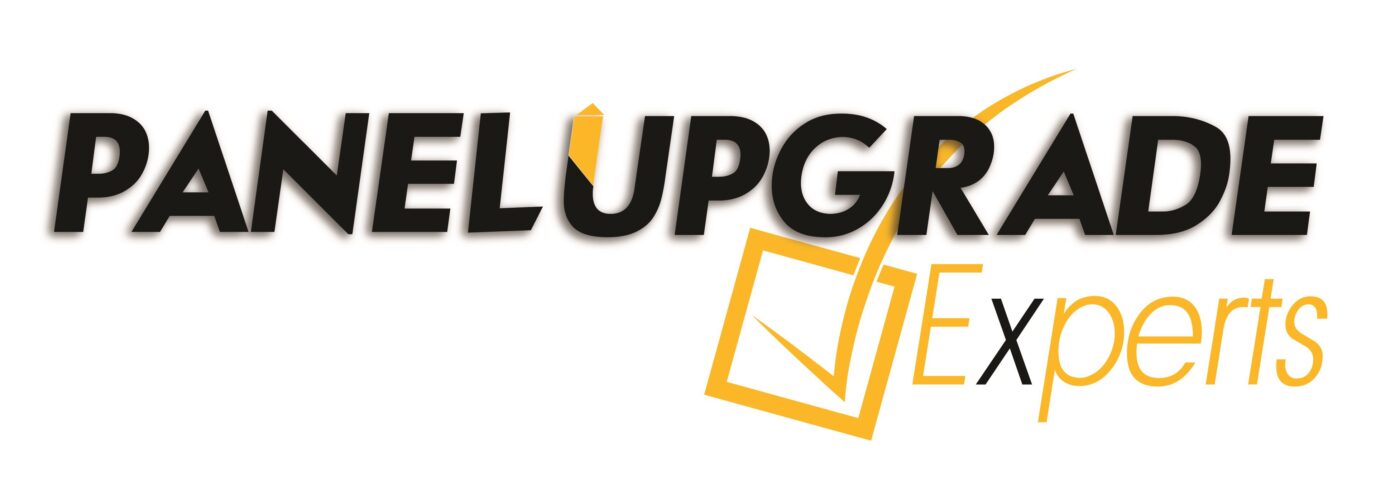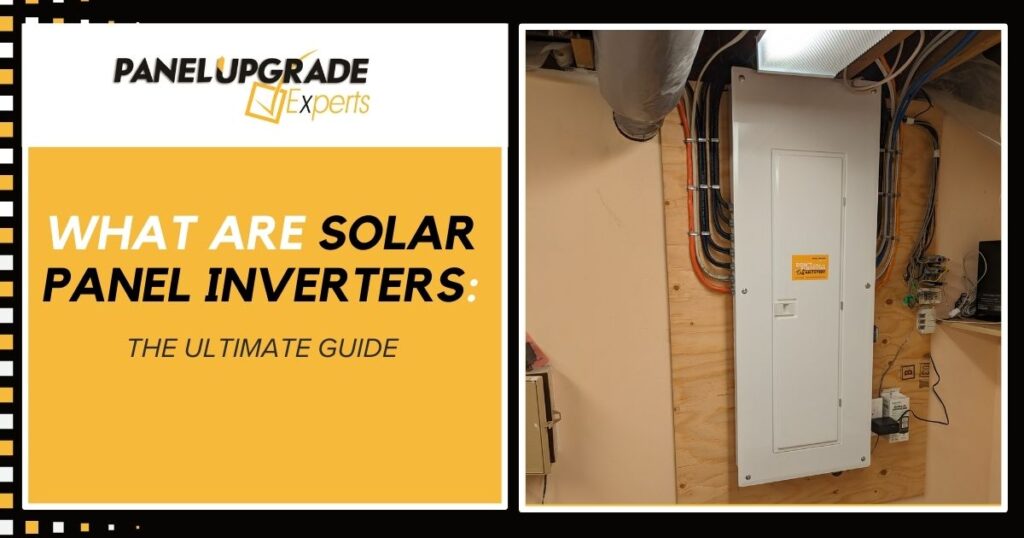What are solar panel inverters? Solar panel inverters, although often overlooked, are crucial for solar systems. With a market value of over $18 million by 2028, they are the MVP in turning solar panels’ raw electricity into the power that our homes, businesses, and grid outlets use.
In this complete guide, we’ll get up close with solar panel inverters, unravel their types, understand their role in your solar setup, and guide you on how to pick the best one for your needs.
But to know what solar panel inverters are, let us first understand how solar panels work.
Understanding Solar Panel
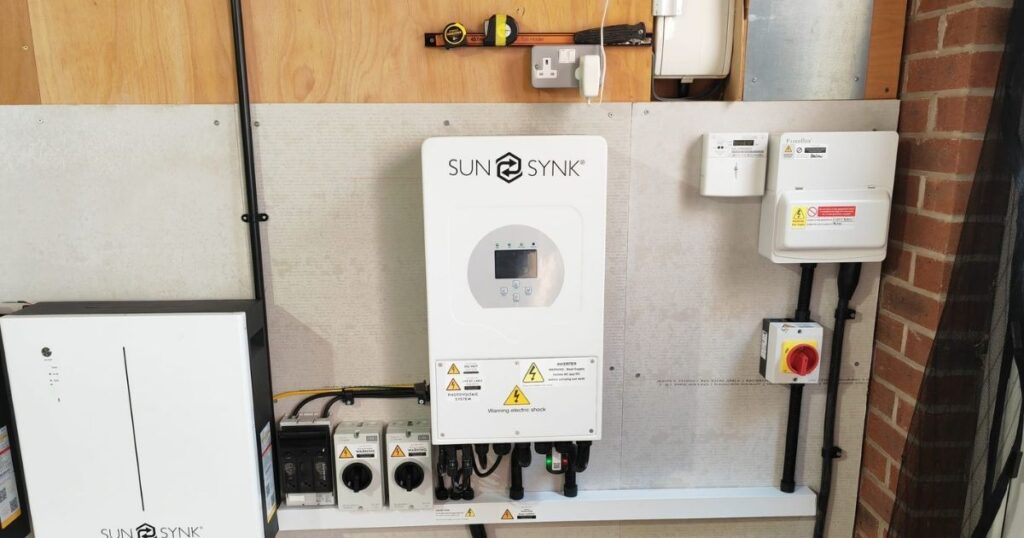
Solar panels are groups of tiny cells made of silicon material sensitive to sunlight. When sun rays hit these cells, they energize the silicon atoms, causing them to release electrons.
Since these free electrons flow in one direction, they become direct current (DC) electricity—the same type of electricity that batteries produce.
Initially, most home appliances used DC electricity. However, as technology advanced, AC, or alternating current, became the standard electricity that grid power and modern appliances preferred.
Although electricity demands change, most solar panels still produce DC electricity. To bridge this gap, we need inverters for solar panels.
Solar panel inverters convert the DC output from your solar panels into the AC power that lights up our homes, keeps our food cold or warm, and charges our gadgets.
Inverters are like translators; they take the language of the solar panels and make it a language that your home appliances can understand.
Solar panel inverters ensure that the solar power output is compatible with powering homes and businesses, making solar panels a long-lasting source of sustainable power.
Types of Solar Panel Inverters
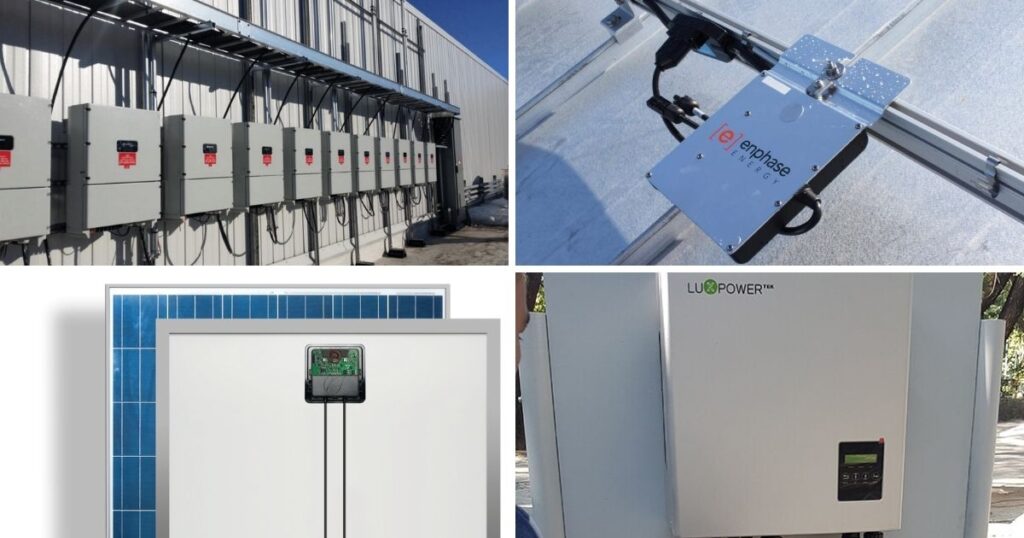
String Inverters
A string inverter is the standard hub for converting solar energy in your home.
This type of solar inverter connects your solar panels in a line/string and converts the direct current (DC) they produce into alternating current (AC) that your home can use.
Pros and Cons:
A string inverter is a cost-effective and reliable option, but it works best if all your solar panels get plenty of sunlight and don’t have any shadows from trees or buildings.
Another downside is that a string inverter does not let you keep an eye on each panel’s performance separately, and if you want to add more panels later, you might need to set up another inverter.
Microinverters
Microinverters are attached to each solar panel, acting like personal power converters. This unique feature lets each panel work efficiently and independently, even if one panel is shaded. This way, every panel contributes its maximum potential to your system’s overall energy production.
Pros and Cons:
Microinverters offer the significant advantage of allowing you to monitor the performance of each solar panel individually. This feature is perfect for quickly identifying and resolving issues, ensuring your system operates smoothly and efficiently.
Still, microinverters aren’t the best choice for every situation. If your solar panel setup is straightforward and unshaded, the higher initial cost of microinverters isn’t ideal either. While they work best in complicated or partially shaded setups, string inverters might be cheaper and more efficient in simple, sun-filled setups.
Power Optimizers
Like microinverters, power optimizers are attached to each solar panel to convert and boost the direct current before it goes to a central inverter. However, unlike microinverters that convert DC to AC at each panel, power optimizers ‘tune’ the DC for better performance and let the central inverter do the conversion.
Pros and Cons:
Power optimizers are a cost-efficient way to ensure that a single panel’s underperformance due to shade or dirt does not affect the entire solar panel system. They provide better output and flexibility than a single-string inverter system and are more budget-friendly than having a microinverter for each panel.
However, if the central inverter fails, the entire system will be affected, making installation and maintenance more complicated. And if your solar panels get consistent sunlight without any shading, a string inverter is more practical.
Hybrid Inverters
Hybrid inverters combine the functionalities of a traditional string inverter with the capability to connect to battery storage, offering a versatile solution for solar energy systems.
Unlike standard inverters that only work with solar panels, hybrid inverters allow you to integrate batteries without needing an additional inverter, making them ideal for future system expansions.
They also assist in converting solar energy and overseeing the charge and discharge cycles of a connected battery system.
Pros and Cons:
A hybrid inverter is perfect if you want to integrate battery storage. Doing so eliminates the need and expense of setting up a separate battery inverter.
With a hybrid system, you can enhance your energy independence by creating a backup power source to keep your lights on during power outages, provided your inverter supports off-grid functionality.
While hybrid inverters offer the convenience of potential expansion, it is crucial to verify battery compatibility since not all hybrid inverters are compatible with every battery type. It means that while you may be saving money in the long run, it’s essential to consider the specifics of the equipment.
Choosing the Right Inverter for Your Home
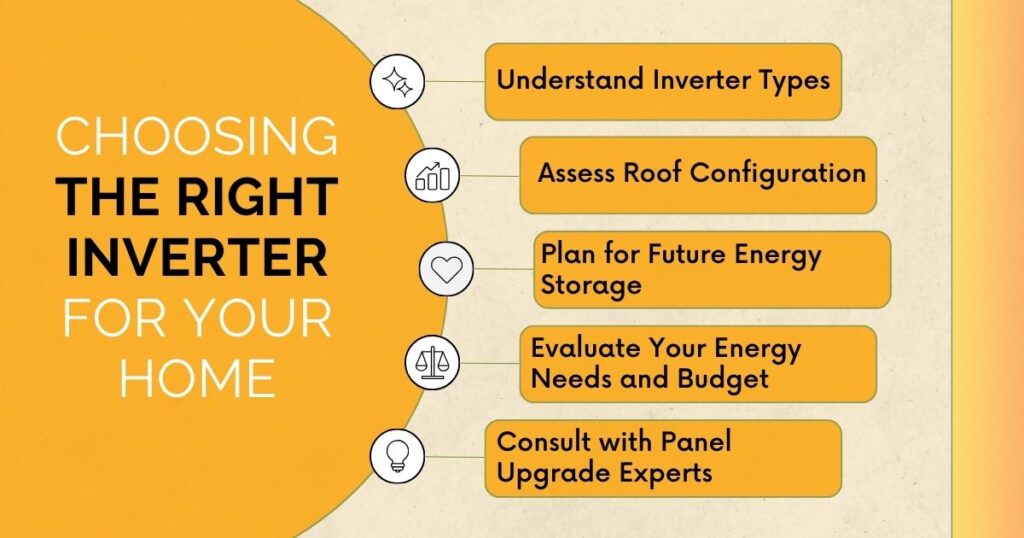
Choosing the right inverter is crucial for maximizing the efficiency of your solar energy system. To help you make an informed decision, we have compiled a simple checklist below:
1. Understand Inverter Types: Familiarize yourself with the three primary inverter types—string inverters, microinverters, and power optimizers. With this, you’ll learn the benefits of each type and their specific applications.
2. Assess Roof Configuration: If your roof has a complex geometry with panels facing multiple directions or unavoidable shaded areas, microinverters or power optimizers are advisable. These devices maximize energy production from each panel, making them ideal for less-than-ideal roof conditions. Conversely, if your panels are unobstructed and can face the same direction, a string inverter will efficiently serve your needs and potentially reduce costs.
3. Plan for Future Energy Storage: Consider a hybrid string inverter if you anticipate adding a battery system. This option enables you to integrate energy storage without needing an additional inverter later, offering a cost-effective solution for expanding your system.
4. Evaluate Your Energy Needs and Budget: Balance your energy requirements and financial constraints. While microinverters and power optimizers offer enhanced performance in certain conditions, they come at a higher initial cost.
5. Consult with Panel Upgrade Experts: For personalized guidance, reach out to Panel Upgrade Experts. Our expertise in solar panel technologies ensures you’ll receive informed advice tailored to your property’s specifics, roof layout, shading patterns, and energy objectives.
At Panel Upgrade Experts, we can help you navigate the complexities of inverter selection, ensuring you invest wisely for optimal solar system performance.
Solar Inverter Efficiency and Performance
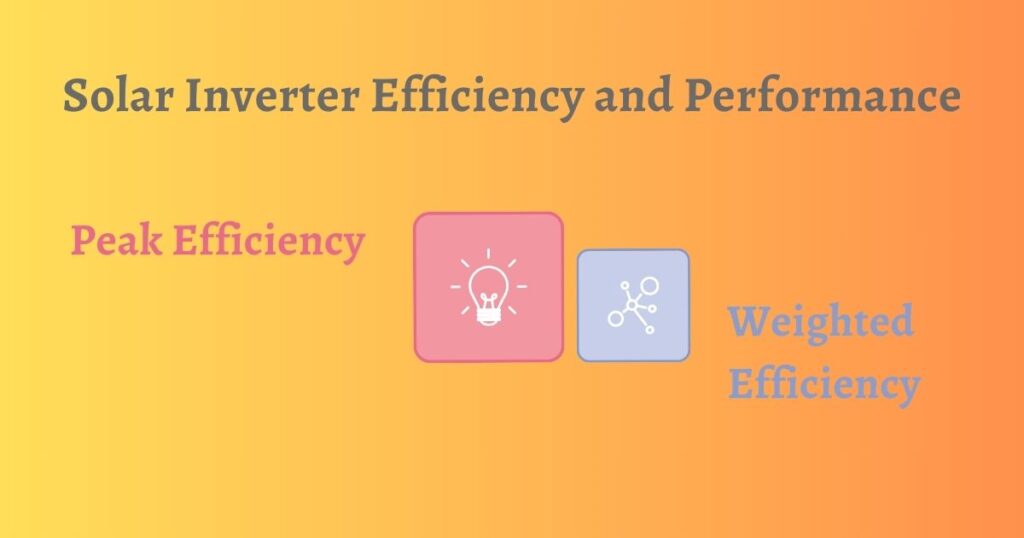
When diving into the solar energy world, understanding inverter efficiency is critical. Think of it like this: two main efficiency numbers tell you how well your inverter works.
The first is “peak efficiency,” which tells you how efficient your inverter can be when everything is perfect. But remember, inverters won’t always work at their best and may only reach peak levels for a short time daily.
The second is “weighted efficiency.” This figure is more rational since it considers real-life factors like changing sunshine levels and temperature. This measurement provides a better estimate of what you can expect in regular use and the factors that affect your solar inverters’ daily performance.
Choosing the right size for your solar inverter is crucial, too. If it’s too small or too big, you won’t get the best performance, and it could even lead to higher electricity costs or damage.
A good rule of thumb is to select an inverter with a higher total output than your solar panels. This way, you account for energy loss during the power conversion process.
Lastly, inverters perform best in ambient conditions, with their operating temperature marking the safe performance range. Since they are outside, they have to deal with varying temperatures.
The ones that can handle higher temperatures work better, staying efficient and long-lasting even in hot conditions, which ensures consistent energy conversion and system reliability.
Solar Inverter Warranties and Lifespan
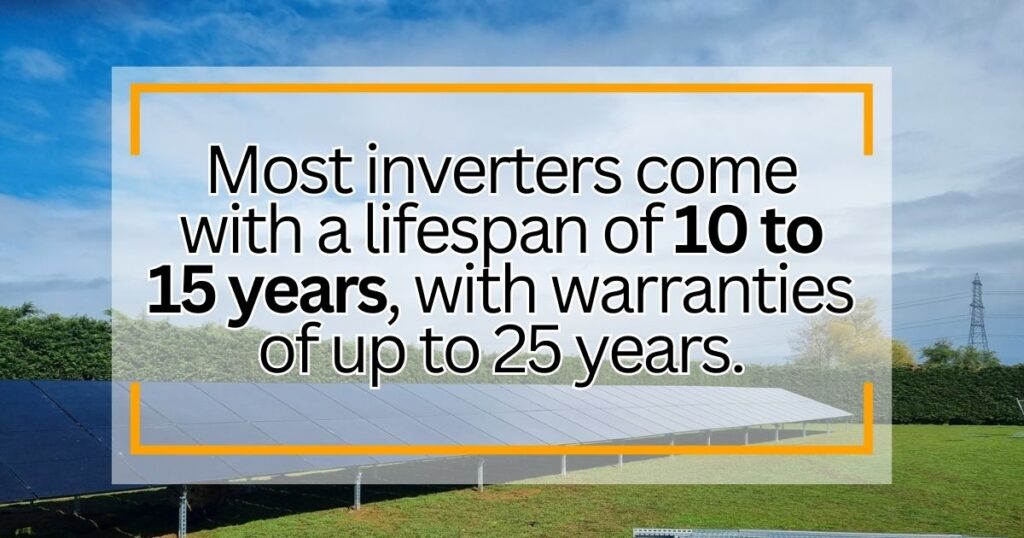
Like any tech, you want to know you’re covered if something goes wrong.
Ask yourself: What exactly does the warranty cover? Most inverters come with a lifespan of 10 to 15 years, with warranties of up to 25 years.
However, not all warranties are created equal. For example, some might cover the whole inverter, while others only cover a specific part.
And what happens if something breaks? You need to know if the warranty only covers the broken part or if it also covers the cost of shipping and labor.
Don’t hesitate to ask the provider about the specifics: Will any scenarios void the warranty? Is the warranty transferable if you sell your house? Even though these small things might not seem important now, they could be vital later.
Installation and Maintenance
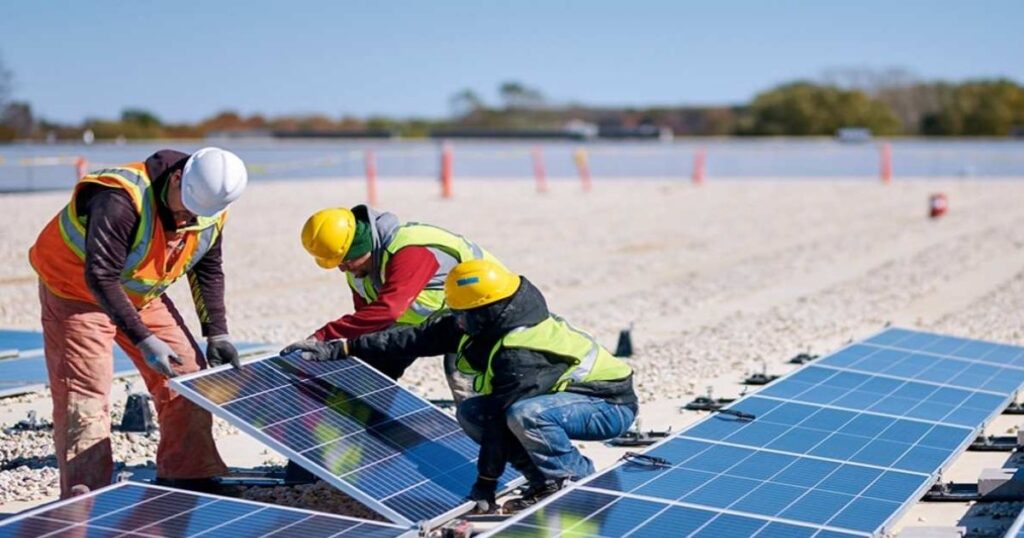
First off, hiring a professional to install your solar inverter is crucial due to differences in installation steps depending on the type of system.
Nonetheless, if you’ve got a string or central inverter, installation involves linking several panels and then connecting them to the inverter. Microinverters, on the other hand, are attached directly under each panel.
Where you place your inverter also matters a lot. If it’s a microinverter or power optimizer, it’ll likely go on your roof. You can put a string or central inverter in your garage or outside, as long as it is out of the way of bad weather.
Once everything’s in place, the maintenance of your solar panel inverter, though crucial, is not demanding.
Ensure that inverters are clean and well-ventilated, and check them now and then for any signs of trouble.
If it starts acting strange or showing signs of trouble, get a technician to take a look. Regular checks can prevent big problems down the line.
Cost Considerations
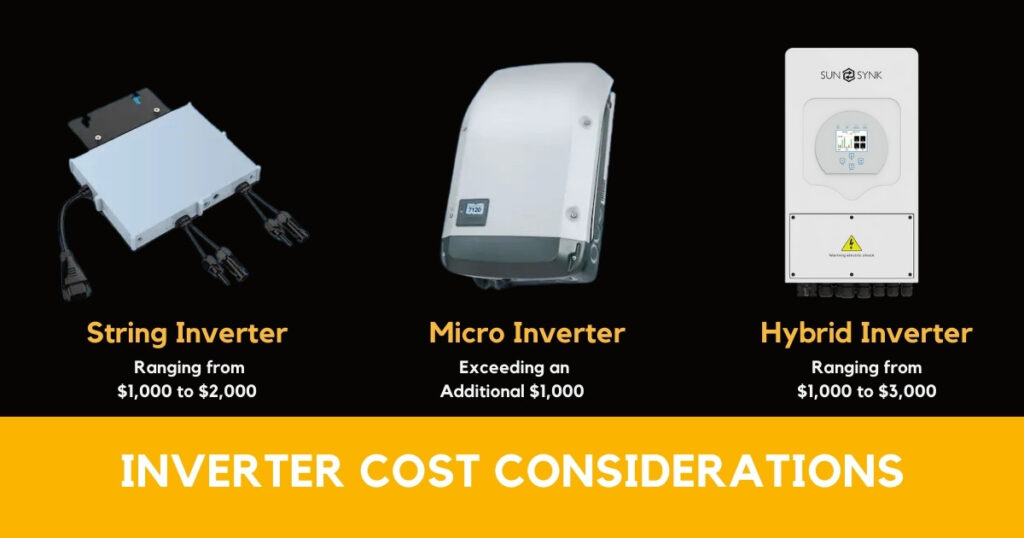
The market offers various types of inverters for solar panels, each with its cost implications.
For example, string inverters, which consolidate the DC output from multiple panels, are generally more budget-friendly, ranging from $1,000 to $2,000.
On the other hand, microinverters, which attach directly to each solar panel, facilitate enhanced energy production and are better suited for complex installations. These, however, come with a higher price tag, often exceeding an additional $1,000.
For those seeking a middle-ground solution, power optimizers provide a cost-effective method of optimizing each panel’s output.
These devices typically cost between $50 and $200 per panel and work alongside a central inverter.
Conversely, hybrid inverters, which support battery storage for energy use during peak times or outages, can cost anywhere from $1,000 to $3,000.
Importantly, the federal solar tax credit offers a substantial financial incentive, allowing you to deduct 30% of your solar energy system’s cost, including the inverter, from your federal taxes to mitigate the upfront cost.
Make An Energy-Smart Choice With Panel Upgrade Experts
Make your home energy-smart and eco-friendly with Panel Upgrade Experts. With our top-notch solar installations, you’ll cut down on electricity bills and save money.
Trust us to guide you through choosing the solar setup that suits your needs and is worth the investment.
Ready to power your home the smart way? Contact Panel Upgrade Experts today and step into a sustainable future with confidence. Let’s make a difference together!
Final Thoughts
Choosing the right type of inverter is crucial for maximizing your system’s efficiency. You have a few options to consider:
- String inverters work well for straightforward setups.
- Microinverters are ideal for fine-tuning individual panels.
- Hybrid inverters are great if you want to integrate battery storage.
Inverters are essential devices that convert the direct current from solar panels into usable alternating current to power your appliances and contribute to the grid. So, it’s important to weigh your choices carefully.
If you want to make wise and sustainable energy choices, let us guide you to the ideal solar inverter that can make your home more eco-friendly and save you money in the long run.
Take your first step towards a brighter and greener future by starting your solar journey with us today!
FAQs
What is a solar panel inverter?
A solar energy system’s solar panel inverter converts the direct current (DC) from solar panels into alternating current (AC). This conversion is essential because most homes and the electrical grid use AC electricity, not DC.
What type of inverter is best for solar panels?
The best type of inverter for solar panels depends on your specific situation. String inverters are cost-effective and suitable for installations where all panels receive similar sunlight. Microinverters are built into each panel, ensuring each one performs at its utmost. These types are perfect for roofs with partial shade or panels that face different directions, whereas hybrid inverters are great if you plan to integrate battery storage.
Do you need an inverter for every solar panel?
No, you don’t need an inverter for every solar panel, unless you opt for microinverters.
Can a solar inverter alone power a house?
A solar inverter alone cannot power a house. An inverter should be part of a broader solar energy system with other components. The inverter’s role is to convert electricity from DC to AC; it doesn’t generate power autonomously.
